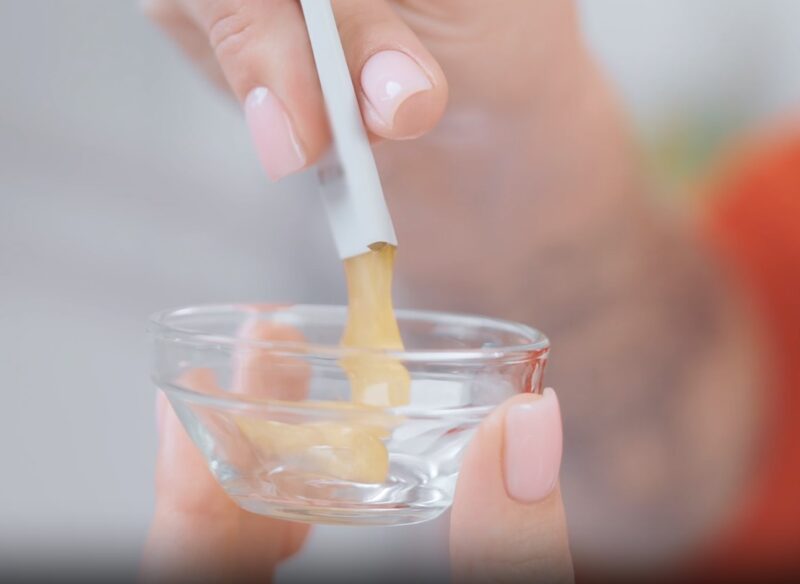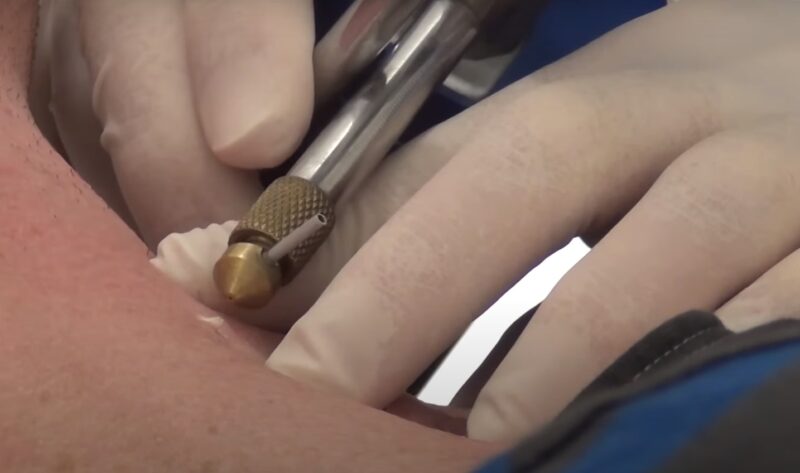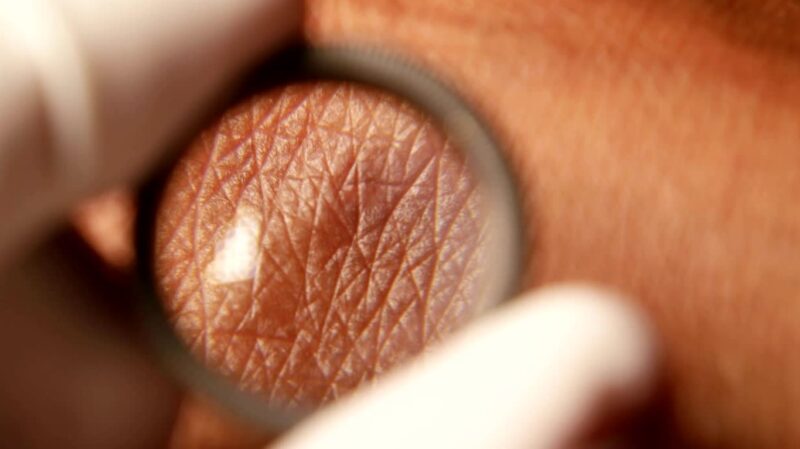Hello and welcome to our discussion on a rather delicate topic, but one that’s important for many: hemorrhoid skin tags. These small, often bothersome remnants of a past hemorrhoid issue are common and, for many, a source of discomfort or self-consciousness.
In this conversation, we’ll explore what these skin tags are, the various ways they can be managed and treated, and some key steps to prevent them. Whether you’re personally dealing with this issue or just curious about the subject, our aim is to provide informative and practical insights in a clear, understanding manner.
Key Takeaways

- Hemorrhoid Skin Tags: Common and benign but can cause discomfort or self-consciousness.
- Non-Surgical Methods: Include topical treatments and lifestyle adjustments like dietary changes, staying hydrated, and regular exercise to manage symptoms.
- Surgical and Medical Procedures: Options like cryotherapy, excision, and laser therapy are available when non-surgical methods are insufficient.
- Aftercare and Healing: Essential for recovery, involving keeping the area clean, avoiding straining, and following doctor’s instructions.
- Prevention Strategies: Incorporate a healthy diet rich in fiber, adequate hydration, and regular exercise to prevent the recurrence of hemorrhoids and skin tags.
- Consult Healthcare Professionals: Always seek professional advice for diagnosis, treatment options, and before trying any home remedies.
- Insurance Coverage: Treatment coverage may vary; check with your insurance provider for specifics.
- Final Advice: Effective management of hemorrhoid skin tags is possible with the right care and preventive measures.
Non-Surgical Methods

Various non-surgical methods can be employed to shrink hemorrhoid skin tags. These methods usually involve topical treatments or lifestyle changes. It’s essential to understand that while these methods can reduce the size and discomfort, they might not completely eliminate the skin tag.
Topical Treatments
There are over-the-counter creams and ointments designed to reduce swelling and alleviate discomfort caused by hemorrhoids and skin tags. Ingredients like hydrocortisone and witch hazel can be effective. Applying these treatments directly to the skin tag can gradually decrease its size.
Lifestyle Adjustments
Making certain lifestyle adjustments can also help in managing hemorrhoid skin tags. These include:
- Dietary Changes: A diet rich in fiber can reduce constipation, thereby lessening the strain during bowel movements. This can prevent further swelling of hemorrhoids and reduce the size of skin tags over time.
- Hydration: Drinking plenty of water helps soften stool, which reduces the need to strain.
- Exercise: Regular physical activity can improve bowel movements and overall colon health.
Surgical and Medical Procedures

When non-surgical methods are not effective, medical or surgical interventions might be considered. These procedures are generally safe and effective but should be discussed thoroughly with your healthcare provider.
Cryotherapy
Cryotherapy involves the application of extreme cold to freeze and remove the skin tag. This procedure must be performed by a medical professional. The process can be uncomfortable, but it’s usually quick and effective.
Excision
In some cases, a doctor might recommend excising the skin tag. This is a minor surgical procedure where the skin tag is cut off. The procedure is typically done under local anesthesia and can be performed in a doctor’s office.
Laser Therapy
Laser therapy is another option where a focused beam of light is used to remove the skin tag. This method is less invasive and has a quicker recovery time compared to traditional surgery.
Aftercare and Healing

Post-treatment care is crucial for a speedy and complication-free recovery. This includes:
- Keeping the Area Clean: Post-procedure hygiene is vital to prevent infection.
- Avoiding Straining: Straining during bowel movements can impede healing.
- Following Doctor’s Instructions: Your doctor might prescribe medications or ointments to aid in healing.
Prevention: A Key Aspect

Prevention of further hemorrhoids and skin tags is as important as treating existing ones. This can be achieved by:
- Maintaining a Healthy Diet: A diet high in fiber can prevent constipation.
- Staying Hydrated: Adequate hydration is essential for soft stool.
- Regular Exercise: Exercise helps in maintaining a healthy bowel function.
| Aspect | Focus Area | Details |
|---|---|---|
| Aftercare and Healing | Keeping the Area Clean | Gently clean with warm water, use unscented wipes, pat dry. |
| Avoiding Straining | Use stool softeners if needed, ensure soft stool through diet. | |
| Following Doctor’s Instructions | Adhere to prescribed medications/ointments for pain relief and to prevent infection. | |
| Prevention | Maintaining a Healthy Diet | Include high-fiber foods to soften stool and reduce straining. |
| Staying Hydrated | Drink plenty of fluids to maintain soft stool consistency. | |
| Regular Exercise | Engage in regular physical activity to promote bowel health and maintain healthy weight. |
FAQs
Can hemorrhoid skin tags lead to cancer or other serious conditions?
Hemorrhoid skin tags themselves are benign and do not lead to cancer or other serious health issues. However, any changes in size, color, or texture should be evaluated by a healthcare professional to rule out other conditions like anal cancer or malignant growths.
Are there any natural remedies effective in shrinking hemorrhoid skin tags?
While there are no scientifically proven natural remedies that guarantee the shrinking of hemorrhoid skin tags, some individuals find relief using aloe vera or tea tree oil due to their anti-inflammatory properties. However, it’s essential to consult a doctor before trying these remedies, as they might cause irritation or allergic reactions in sensitive areas.
How long does it take for a hemorrhoid skin tag to shrink after treatment?
The time it takes for a hemorrhoid skin tag to shrink depends on the treatment method used. Surgical procedures can offer immediate removal, while non-surgical methods like topical treatments may take several weeks to show results. The healing and recovery process varies from person to person.
Can hemorrhoid skin tags reappear after removal?
Yes, there is a possibility of hemorrhoid skin tags reappearing, especially if the underlying causes like chronic constipation or straining during bowel movements are not addressed. Maintaining a healthy lifestyle and following preventive measures is crucial to minimize recurrence.
Is it safe to try to remove a hemorrhoid skin tag at home?
Attempting to remove a hemorrhoid skin tag at home is not recommended. This can lead to complications such as bleeding, infection, and excessive pain. It is crucial to seek professional medical advice for safe and effective removal.
Does insurance typically cover the treatment for hemorrhoid skin tags?
Coverage for hemorrhoid skin tag treatment varies depending on the insurance policy and the reason for treatment. If the procedure is deemed medically necessary, such as in cases of discomfort, pain, or hygiene issues, insurance may cover it. However, if the treatment is for cosmetic reasons, it might not be covered. It’s advisable to check with your insurance provider for specific coverage details.
Final Words
In wrapping up our discussion on hemorrhoid skin tags, it’s essential to remember that while these are common and generally harmless, they can be a nuisance. The good news is that there are multiple ways to address them, ranging from simple at-home care to medical treatments.
The most important takeaway is the need for proper diagnosis and consultation with a healthcare professional before deciding on a course of action. And let’s not forget the power of prevention – maintaining a healthy lifestyle can go a long way in avoiding hemorrhoids and their aftermath. With the right information and care, dealing with hemorrhoid skin tags can be less daunting and more manageable.

